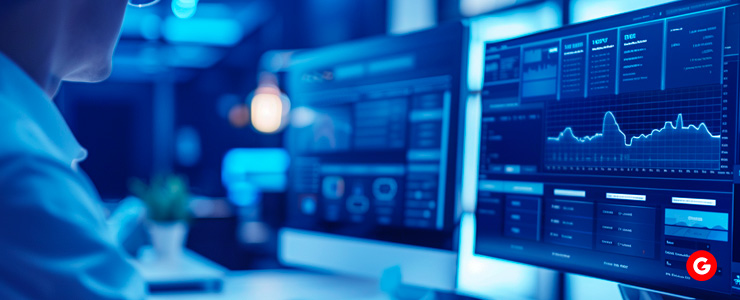In today’s world of trading and investing, knowledge and experience are the most essential pillars of trading. For experts and beginners, backtesting and paper trading are two basic tools that stand out as the most important aspects of learning and improving investment strategies.
Paper trading can help you evaluate your trading strategy performance in real-time, while backtesting aids in strategizing using past market data. These methods allow investors to simulate realistic market conditions without risking actual capital, providing incredible insights and helping them gain the necessary skills.
So, if you want to develop trading discipline and make paper profits, you are at the right place. Understanding why backtesting and paper trading can significantly enhance one’s investing journey.
What is Backtesting?
Backtesting involves using past available data to build a trading strategy and evaluate its feasibility and profitability. By analyzing how a plan would have performed in the past, investors can measure its effectiveness and potential chances of failure before risking real money. Why it is such an important factor in trading can be seen below.
Why it Matters?
- Validating Strategy: Backtesting permits traders to check the feasibility and effectiveness of their trading strategies by using the available historical market statistics. This strategy allows traders to verify whether or not the opted method is correct, sufficient, and suitable for its implementation.
- Risk Reduction: Understanding the risks of a trading method is vital for capital management and control. Backtesting helps investors discover market flaws, loss-making situations, and other potential dangers, letting them correctly refine their risk control techniques.
- Performance Evaluation: Using backtesting on a trading method, investors can compare their average performance with various market elements. This evaluation enables them to examine the opted technique’s profitability, success ratio, and other critical performance information, helping traders make higher selections about a trade’s suitability and chances of success.
- Iterative Improvement: Backtesting allows an iterative technique for strategy improvement, permitting traders to check distinctive parameters, entry and exit criteria, and risk management elements. By analyzing the effects of every check, investors can refine and optimize their strategies over time, increasing their chances of success in trading.
- Time Efficiency: Backtesting lets investors simulate years of trading data in a fraction of the time compared to what it would take to check manually. This time efficiency allows traders to test multiple strategies and iterations quickly, speeding up the process of knowing about the behavior of specific trades and improving their selection-making capabilities.
- Customization and Adaptability: Backtesting software programs allow traders to personalize parameters and standards based on their options and trading styles. This flexibility enables investors to conform their techniques to the various market conditions and optimize performance based on their needs and risk tolerance.

What is Paper Trading?
Paper trading is an invaluable tool that helps traders simulate market actions without the risk of financial losses. It provides an excellent opportunity to learn and test your strategy.
Recognized as an essential step in a trader’s journey, it can be crucial in building real-world skills required in the dynamic trading environment. Its importance is highlighted below in detail.
Why it Matters:
- Risk-Free Environment: The most significant advantage of paper trading is that it permits traders to practice trading strategies in a risk-free environment. Since no real money is at stake, investors can experiment with different unique processes and analyze their mistakes without fearing financial losses.
- Balancing Act: Paper trading is worthwhile for gaining trading skills but has barriers. Pairing it with strategies like backtesting and slow market exposure is critical. Backtesting assesses performance based on historical data, while gradual live exposure helps minimize the gap between simulation and actual trading.
- Diversity: Paper trading is relevant across markets, including forex, providing a risk-free space to refine strategies. It’s particularly useful for foreign exchange, where excessive volatility and 24-hour trading pose unique challenges. A platform like FXGiants can help you understand and trade forex. It is a fantastic platform that provides a secure, fast, and user-friendly trading experience.
- Learning Opportunity: Paper trading provides buyers with a great learning opportunity to familiarize themselves with the dynamics of the monetary markets. It allows them to gain hands-on experience in executing trades, analyzing market information, and understanding how various factors impact the market.
- Experimentation with Financial Aspects: Paper trading permits buyers to test unique financial instruments, including stocks, alternatives, futures, and forex, without risking capital. This allows them to discover various asset training and trading strategies and identify what works better for their capital targets and risk tolerance.
- Time Management: Unlike live trading, which requires constant monitoring of the markets, paper trading lets investors check techniques and discover opportunities at their own pace. This flexibility allows investors to improve their competencies without dedicating vast amounts of time to actual trading time.
Understanding the Synergy
While backtesting and paper trading offer unique benefits, an ideal trading strategy should include a good mixture of both. By integrating these techniques into a suitable learning framework, investors can fasten their learning journey and improve their decision-making abilities.
Combining Backtesting and Paper Trading:
- Strategy Refinement: Backtesting offers the initial validation of a trading strategy, while paper trading permits real-time experimentation and refinement. By switching intelligently between these stages, investors can enhance their techniques for ideal overall performance.
- Risk Mitigation: Paper trading is an experimentation ground for risk management techniques backed by backtesting. Buyers can mitigate potential losses before investing capital in markets by implementing and evaluating possible controls in a simulated environment.
- Confidence Building: The combination of backtesting and paper trading develops self-confidence in buyers by providing statistical proof of the effectiveness of various methods and considering practical utility in simulated conditions. This self-assurance is useful when transitioning to live trading.
Conclusion
Lastly, backtesting and paper trading are essential tools for investors looking to improve their skills, make better-informed decisions, mitigate risks, and enhance their overall performance in the trading world.
By effectively using these techniques and understanding their synergy, investors can improve their investment journey with increased knowledge and confidence and build a solid foundation for improved success rates in the dynamic world of marketing and finance.

FAQs
Is paper trading the same as backtesting?
Paper trading uses live market prices to execute orders, while backtesting uses past historical data. You manually execute paper trades in real time, while, on the other hand, backtesting is an automated process.
Is paper trading the same as actual trading?
The most obvious difference between paper and live trading is that paper trading doesn’t involve the risks and rewards of trading assets with real money. Traders can lose and gain from using live accounts compared to paper trading options.
Why is backtesting important in trading?
By utilizing the power of historical data, backtesting allows traders to analyze the potential chances of profits and risks associated with their strategies, helping them make better and data-backed decisions to improve their overall trading performance.
Why is paper trading important?
Paper trading is an essential tool for beginners seeking to enter the world of financial markets. It provides a low-risk environment to learn, practice, and improve trading strategies while gaining market knowledge.
DISCLAIMER: This information is not considered investment advice or an investment recommendation, but is instead a marketing communication
